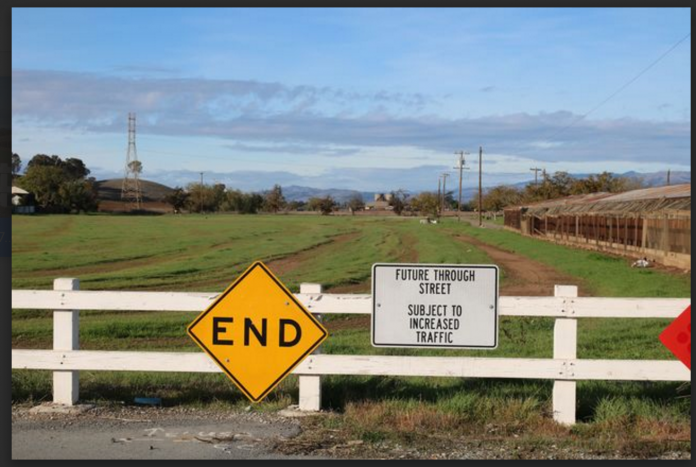A year ago, the city and the Gilroy General Plan Advisory Committee invited the public to “to help choose a future growth plan for Gilroy.”
On February 25, 2015, three land use plans were presented at Eliot Elementary School. Two called for developing thousands of homes on agricultural land at the northern end of Gilroy. The third called for “compact growth” that would avoid annexing land and instead focus on infill development within Gilroy’s city limits.
By a 14-to-0 vote, residents at the meeting favored the slower growth option that would increase the population by 20,652, instead of adding 76,866 new residents under the “orderly growth” option. The planning commission unanimously agreed.
In December, the council ignored citizen input and overrode the commission. It voted to rush the annexation, causing a county agency to launch an unprecedented lawsuit against the city. In the face of the legal action, Mayor Perry Woodward says he asked the developers to withdraw their application so that the city could educate the public about the benefits of the growth plan.
The members of Gilroy Growing Smarter feel they know enough already and want to take the issue to Gilroy voters. As the Dispatch went to press, leaders of the group planned to file a notice of intent to circulate a petition for a ballot measure.
Gilroy Growing Smarter’s secretary, David Lima, says the petition will establish urban growth boundaries for the city in line with what citizens supported at the Eliot School meeting. Gilroy would become a city of around 75,000 people instead of 130,000. (GPAC’s “orderly growth” projections are even more aggressive than the 2014 Hexagon traffic study that foresaw 120,637 residents.)
Exceptions to the growth line could be made for schools, parks, affordable housing, water projects or job creation. The ballot measure would strip the council’s power to authorize big housing developments outside of the city limits without first going to voters for approval.
“It is not up to four politicians how big and how fast Gilroy grows,” Lima says. “They have the responsibility to follow the wishes of the public.”
“There is significant room for growth within the city limits,” he believes.
In a democracy, citizens have the right to take issues to voters when they disagree with the actions of elected officials. It’s a shame it had to come to this, though. Had Mayor Woodward and ex-Mayor Don Gage listened to the Gilroyans who took the time to participate and not been in such a rush get in a scrap with LAFCO, we wouldn’t be heading toward a city-wide battle over the future of the community.
By the time you read this, if plans proceed as scheduled, the initiative process will have begun. It will allow Gilroyans to take control of their future and decide how big they want Gilroy to become. If the petition drive proves successful, the will of the people will be expressed at the ballot box.
Voters will have the final word. And that’s as it should be.













